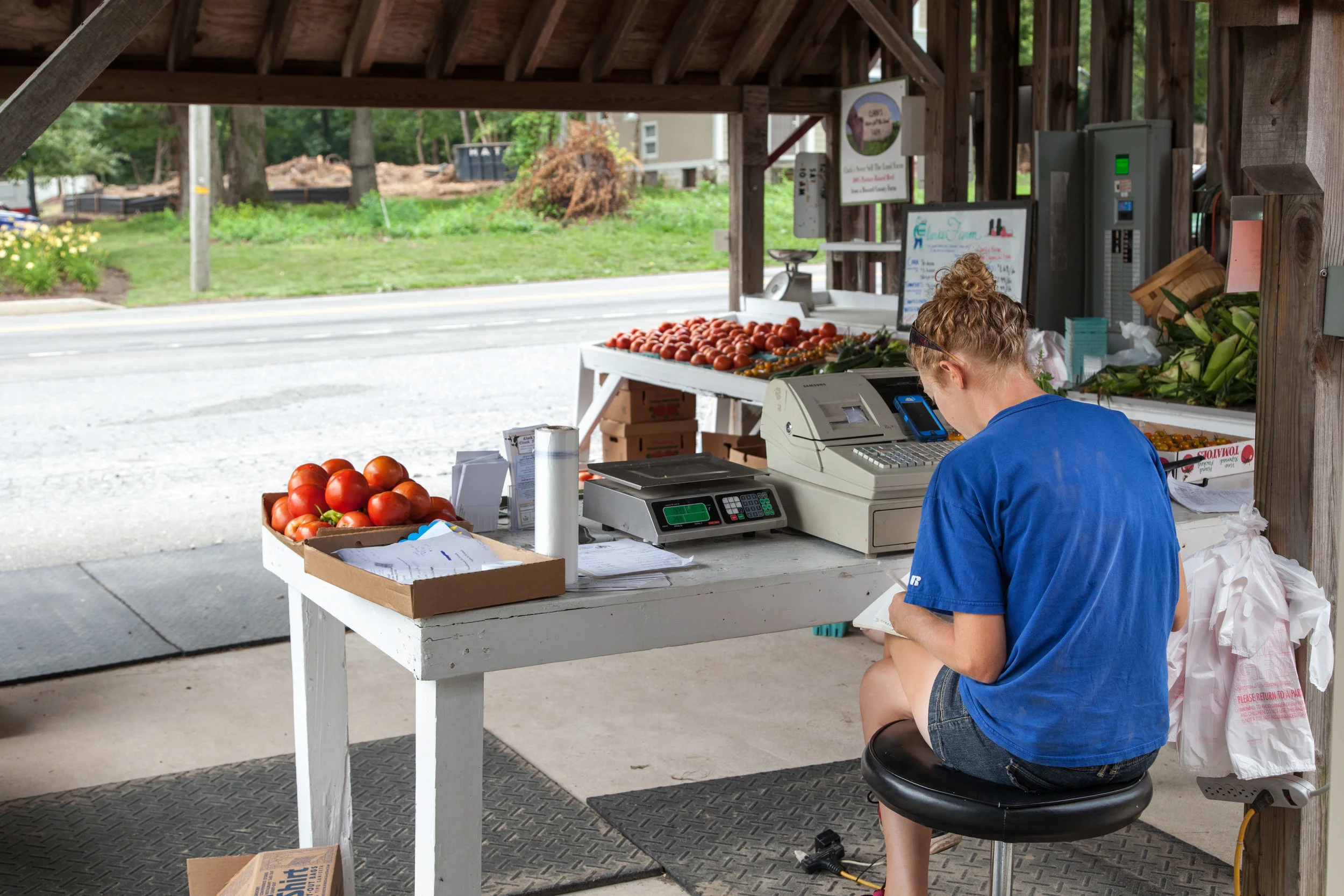Returning home
Nora’s plan had been to secure a summer job on a horse farm, and she was excited by the prospect of going anywhere she could find a job. But with her horrible pain, finding a job didn’t seem likely. “What would I say? ‘I have crippling rheumatoid arthritis but can I come work with your horses for the summer?’” Instead, she came back home that summer after her freshman year and again managed the produce stand that she had managed while in high school. She was in considerable pain and needed to have support around her in case she wasn’t able to function physically.
Nora waits for customers at the family farm stand.
Somehow she managed to make it to the stand every day. Each evening she would take the cash drawer to her grandfather, who at that point was near the end of his life and didn’t leave the house much. She would bring him some corn and a ripe tomato and let him know which customers stopped by and asked about him. Together they would count the drawer. (That’s such a sweet image, and one I wish I could have photographed.) This was their routine every night of the summer, until he passed away at the end of August.
Nora says that despite her crippling pain, that summer’s experience held a silver lining. “If I hadn’t had my disease and I had gone somewhere else for the summer, then I wouldn’t have had that time as an adult to get to know my grandfather. I also started to grow up and realize that the farm was not something that was holding me back or holding me down, but it might be a gift, it might be something I’d appreciate. I didn’t want to see coming back to the farm as a safety net, I wanted to see it as something I wanted, and that summer it became an option.”
“I joke now that I didn’t see farming as an option or a career when I was in high school. Nobody farmed. You didn’t meet farmers, and if you did they were 60-year-old men who just sat on tractors all day. Doctor, lawyer, nurse, teacher…those were careers. But I started to see farming as something I would enjoy, something I could do.”
The medical treatment
Essentially Nora’s treatment for the RA was prednisone, over-the-counter anti-inflammatories, and the least detrimental of a class of medicines known as disease modifying anti-rheumatic drugs (DMARDs). She had to start at the lowest level of a DMARD and take it for a while to see if it would help. If it gave no relief, she would have to raise the dosage. Nora says it was like a waiting game. When the medicine failed to bring relief, she would again up the dosage until she reached the maximum amount, then she’d move on to a more powerful drug. Soon she was taking Methotrexate, a drug used to suppress the immune system. It’s a chemotherapy drug used for autoimmune diseases and cancer. Every six weeks, finding little relief, she upped her dosage, until she was at the maximum oral dosage. She suffered from bouts of nausea, frequent colds, and thinning hair.
But the pain was finally lessening. Nora knew the drugs would have bad side effects, but she felt following her doctor’s recommendations was her only option. As she put it, “As far as I had been told, this was all I could hope for and it would be how my whole life would be, ups and downs, lots and lots of pills, and the possibility of stronger meds down the road.” She loved her rheumatologist, who she found to be very supportive, and she soldiered on.
The return to the farm
After graduation from college in 2009, she returned to the farm with the idea of making farming her career. By then her disease was pretty much under control through her medications.
One of Nora’s goals for the farm was to change how the farm stand worked. The farm grew tomatoes, corn and sweet peppers, and everything else was purchased elsewhere to resell at the stand. But Nora wanted to grow all the vegetables herself and be able to say, “I grew this—I grew all of this.”



